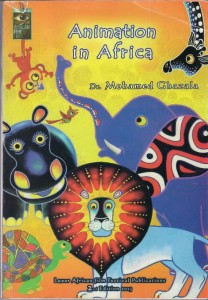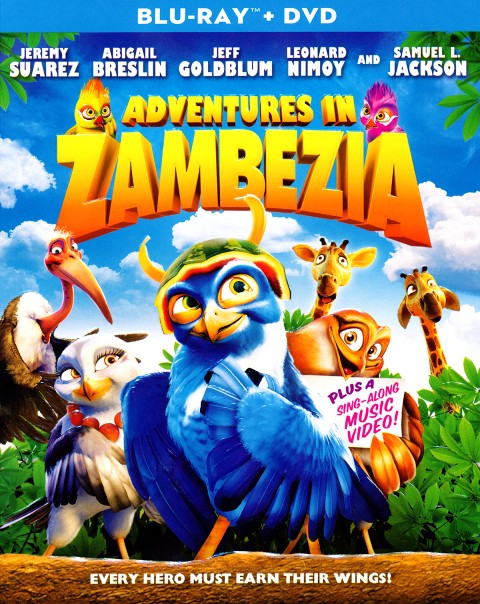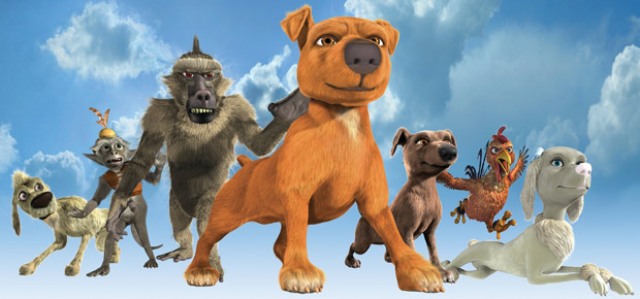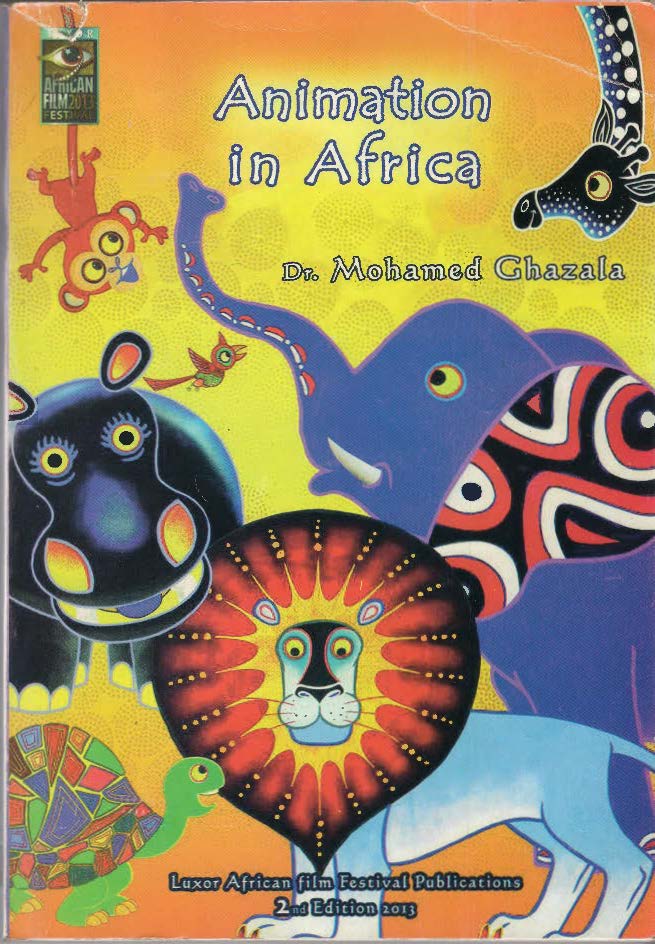By Ogova Ondego
Published January 9, 2015
 I have utmost respect for anyone who attempts to do an Al-Africa project, such as compiling a book on the history of film or art in Africa.
I have utmost respect for anyone who attempts to do an Al-Africa project, such as compiling a book on the history of film or art in Africa.
Animation in Africa, a 160-page publication in both English (124 pages) and Arabic (136 pages) by Mohamed Ghazala under the umbrella of the Egypt-based Luxor African Film Festival in 2013 is one such project.
RELATED: Sub-Saharan Africa’s Father of Animation Films Speaks Out
Dr Mohamed Ghazala, an assistant professor in the Faculty of Arts at Cairo’s Minia University who specialises in African animation and comics, begins his writing with the question: Is ‘African animation’ that which is produced in Africa by Africans, or made with African finance or that which is prepared for African audiences?
As if stoking controversy, the writer continues, “Does speaking about animation in African include films produced by foreigners in Africa?”
Even without asking, ‘Animation in Africa’ and ‘African animation’ aren’t synonymous; just as ‘English literature’ and ‘Literature in English’ aren’t.
The book, whose focus, true to its title, should remain on animation in Africa without caring whether the animators are Africans or foreigners, states that the first animation in South Africa was Artist’s Dream/The Artist’s Inspiration, a comedic short by Harold Shaw, an American, in 1915.
RELATED: Thirteen-Year-Old Africa Movie Academy Awards Nominee Relives Her Experience
MICH MICH EFFENDI, created by Belarusian Frenkel Brothers with Egyptian funding as propaganda films for the mobilization of Egyptian army during the Second World War era could be counted as the first animated films made with African finance.
 Even AZIZA & YOUNESS that was made by Antoine Selim (1911-1989) in 1938 can’t be counted as the first animation made by an African as the Cairo-born creator had no African roots having been born of Lebanese parents.
Even AZIZA & YOUNESS that was made by Antoine Selim (1911-1989) in 1938 can’t be counted as the first animation made by an African as the Cairo-born creator had no African roots having been born of Lebanese parents.
RELATED: Nigerian leads Africa in demanding a share of the US$80 billion global animation industry
If the birthplace, the roots and the source of production finance are considered, then THE WHITE LINE, a live action short with animated clips that was made in 1962 by Ali Moheeb (1935-2010) of Egypt could be said to be the first animation by an African. But such credit is given to Moustafa Alassane of Niger who made his first animated film in 1963 but that was also the same year Mohamed Aram of Algeria made THE FEAST OF THE TREE.
The book muddies up the water even more when Adam De Beer, identified as researcher on South African animation, dismisses South Africa’s JOCK OF THE BUSHVELD (2011) and ZAMBEZIA (2012) as being neither African nor South African. Though the former is ‘set in a particular historical, cultural and literary context that identifies it’ as ‘African’, De Beers argues, “there is nothing in the animation per se that would identify it as African or South African.”
Likewise, De Beers argues on the latter, “ZAMBEZIA uses iconography, i.e. animals, landscapes, perhaps even cultural references, that may be seen as (South) African but with a cast of mostly international voices, a universal hero’s journey as the underlying narrative, and digital techniques that were pioneered elsewhere.”
RELATED: East Africa’s First Entertainment Industry Hub Evokes Mixed Reaction
Having introduced the controversy, and as if it is simply an exercise in academic theory, Ghazala goes on to say, “Many cinema historians and researchers argue that there is no film history, only film histories. For some, this means that there can be no intelligible, coherent ‘grand-narrative’ that puts all the facts into place. For others, film history means that historians work from various perspectives and with different interests and purposes.†But should they? Why not come up with a clearly defined perspective from which whatever conclusions are drawn are scientifically tenable?
 Ghazala concludes that individual, not group attempts at animation, were made in almost every African country “though we can’t compare it, say, with Japanese style or Manga or Anime, or with American or European style of animation.”
Ghazala concludes that individual, not group attempts at animation, were made in almost every African country “though we can’t compare it, say, with Japanese style or Manga or Anime, or with American or European style of animation.”
He contends that “African animation is not a real industry…because it is difficult to produce films”, there being no money, equipment or manpower.
Despite what he terms as an abundance of talent in Africa, the continent’s animation sector is beset by many hurdles: a lack of production funding, a dearth of production equipment and studios, non-existent distribution channels, a limited number of training schools and almost no trainers who could teach Africans to develop their own tradition of animation instead of relying on Japanese and western styles.
RELATED: Kenya (nay, the world) Runs Out of Creative Ideas
 Ghazala, however, expresses hope that the situation is changing for the better in countries like Kenya, Ghana, Morocco, Algeria and Zimbabwe besides the big boys Egypt and South Africa who have been around for a while.
Ghazala, however, expresses hope that the situation is changing for the better in countries like Kenya, Ghana, Morocco, Algeria and Zimbabwe besides the big boys Egypt and South Africa who have been around for a while.
He writes that the Government of Tunisia’s Ministry of Culture and Heritage “subsidizes almost all film productions” and that the North African country now has “around 10 production studios specialising in animation’ but that “Almost all their production is oriented to ads and series.”
Morocco’s National Institute of Fine Arts (INBA) isn’t just the only African training institution to have a department of comics, but also holds the annual Tetouan International Comics Festival.
Ghazala says “Egypt is the undisputed pioneer in animated films in African and Arabian countries, as it is in other artistic disciplines related to the audiovisual sector, notably cinema, where we see the important legacy that was left to us more than 100 years ago.”
RELATED: Ethiopian Airlines Introduces Daily Flights to Shanghai and Vienna
Ghazala wites that Egypt has around 50 animation studios which provide more than 100 animated hours of series, episodes, advertisements and short films annually.

Besides 3-D and Flash, Egyptians work primarily in 2-D and claymation from specialized studios. Of the more than 200 artists who graduate in animation, half of them continue to work in animation as their career. While Cairo International Film Festival for Children and Ismailia International Film Festival for Documentary and Short Animation Festival have animation categories in their competitions, local events such as Al Sakia Animation Festival and National Egyptian Animation Festival celebrating African animation.
Under Egypt, the book also pays tribute to Ali Moheeb (1935-2010) whom it describes as the ‘father of Egyptian animation’, ‘founder of animation art’ and the first person ‘to use animation in advertising and in movie production in Egypt’.
RELATED: Oscar Dream Fulfilled for the ‘Kenyan of the Moment’
Together with his brother Hossam El Deen (1930-1996), Moheeb established and managed the animation department at the national Television of Egypt in 1961; this was the first animation studio in Africa and the Middle East, Ghazala says.
 The Moheeb Brothers resigned from the television station in 1967 to concentrate on their own private studio that trained artists to become animators and animation trainers; it was donated to the Faculty of Animation at the High Cinema Institute, Academy of Egyptian Arts, in 2008.
The Moheeb Brothers resigned from the television station in 1967 to concentrate on their own private studio that trained artists to become animators and animation trainers; it was donated to the Faculty of Animation at the High Cinema Institute, Academy of Egyptian Arts, in 2008.
RELATED: Why Kenya’s Education System Calls for Re-orientation
Profiled immediately after Egypt is Moustapha Alassane (1942- ) of Niger who trained in animation in Canada before creating his first films; LA BAGUE DU ROI KODA and AOURE in 1962.
Describing Alassane as ‘Africa’s reference for film animation’, the book says he was made a Knight of the Legion of Honour “for his efforts as a pioneer in African cinema†by the President of France in 2007.
Turning to South Africa, the book says its animation studios thrived on creating animated commercials for television and cinema.
 Though the focus appears to be on animator Kwame Nyong’o who trained in photography, sculpture, drawing and painting, the section on Kenya talks about Hollywood’s THE LION KING, UNESCO’s Africa Animated workshops (2004-2007), Mank and Tank that created the SARAH series on girl empowerment for UNICEF, Ambatana, Smoke and Mirrors, Homeboyz and Association of Animation Artists. But the article fails to include Lola Kenya Screen that has since 2006 been mentoring children in animation; indeed more than 20 short animations that have been realized from the initiative have been screened around the world where they have collected awards and received accolades.
Though the focus appears to be on animator Kwame Nyong’o who trained in photography, sculpture, drawing and painting, the section on Kenya talks about Hollywood’s THE LION KING, UNESCO’s Africa Animated workshops (2004-2007), Mank and Tank that created the SARAH series on girl empowerment for UNICEF, Ambatana, Smoke and Mirrors, Homeboyz and Association of Animation Artists. But the article fails to include Lola Kenya Screen that has since 2006 been mentoring children in animation; indeed more than 20 short animations that have been realized from the initiative have been screened around the world where they have collected awards and received accolades.
RELATED: New Kenyan Novel Dreams of Things That Never Were and Asks Why Not
Initiated by the Nairobi-based Eastern African office of UNESCO’s Information and Communication sector, the Africa Animated project trained around 40 animators from Kenya, Uganda, Tanzania, Ghana, Nigeria, South Africa, Zimbabwe, Burkina Faso, Ethiopia and Egypt in modern techniques of animation in order to create films on their unique folk stories. More than 20 short animations were realized while some of the animators who had been trained continued to use the acquired skills in their own productions after returning home. South Africa’s Mike Scott and Kenya-based Tanzanian cartoonist Godfrey Mwampembwa (GADO) started ‘Jozi Zoo’ and XYZee television series, respectively. The trainers came from Canada, Britain, USA, South Africa, Italy and France.
And perhaps this article would be incomplete if it did not touch on TinTin in Congo: Racism in the Name of Comics! as presented in Animation in Africa as an illustration of African stereotyping, denigration and misrepresentation in western media. Mbuto Mondondo, a Congolese national living in Belgium had in August 2007 filed a case seeking to stop further publication of ‘TinTin in Congo’arguing that it was racist and xenophobic; but, despite the fact that some countries no longer publish the comic they regard as ‘colonialist’, ‘cruel to animals’ or affix a warning banner on it in public libraries, the court of the first instance in Brussels, on February 10, 2012, ruled that TinTin in Congo by Georges Remi whose pen name is Herge, would continue to be published.
RELATED: Eldoret Town’s Entertainment Spots Lack Authentic African Cultural Touch
 Mondondo had argued, in an urgent application he had written to the King of Belgium on the occasion of the 50th anniversary of the Congolese independence, that TinTin in Congo was an ‘insult to all Congolese’.
Mondondo had argued, in an urgent application he had written to the King of Belgium on the occasion of the 50th anniversary of the Congolese independence, that TinTin in Congo was an ‘insult to all Congolese’.
Animation in Africa concludes with an interview with Paula Callus, a senior lecturer at the National Centre of Computer Animation at Bournemouth University and doctoral student of Sub-Saharan African Animation at the School of Oriental and African Studies who was one of the trainers at UNESCO’s Africa animated workshops.
Though a noble project, the value of Animation in Africa would have been greatly enhanced with some editing. In fact, one may wonder whether the book was ever edited at all despite the fact that Anna Vasylieva is indicated as ‘editor’.
It also appears like the writer did not have a clear focus, angle or perspective from which to tackle the subject under review. After reading the book the reader is left wondering what conclusions to draw on ‘animation in Africa’.
Coherence and clearly defined themes are also lacking from the presentation that doesn’t draw a line between he profiles of countries and those of animators; for instance, taking the work of Moustapha Alassane and German-based Ebele Okoye as being representative of Niger and Nigeria, respectively.
The book also fails to define and connect Animation with Cartoons, Comics and Video Games that are inter-related. In the same breath, having larger and clearer photos to illustrate the text would have added value to the book.
The good news is that any shortcoming that has been highlighted in this review can be corrected in the revised edition of this publication.
RELATED: How Western Television Normalises ‘Abnormalities’ in Kenya




